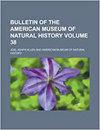Phylogenetic Relationships of a New Genus of Calliopsine Bees from Peru, with a Review of Spinoliella Ashmead (Hymenoptera: Andrenidae)
IF 3.4
2区 环境科学与生态学
Q1 BIODIVERSITY CONSERVATION
Bulletin of the American Museum of Natural History
Pub Date : 2017-04-13
DOI:10.1206/0003-0090-412.1.1
引用次数: 3
Abstract
ABSTRACT We establish a new genus for an unusual species of Peruvian calliopsine bees (Panurginae: Calliopsini) that was initially reported in the literature as an undescribed species of Spinoliella Ashmead that purportedly expanded the range of the latter genus beyond Argentina and Chile. Although the new genus superficially resembles Spinoliella, it is easily distinguished by a unique combination of characters in both sexes but particularly in the male hidden metasomal sterna and genitalia. A cladistic analysis of 82 adult external morphological characters including all species of Spinoliella, as well as species of the remaining genera of Calliopsini, suggests that this group is sister to a clade consisting of Spinoliella and Callonychium Brèthes. We describe and illustrate Xeranthrena imponticula Gonzalez and Engel, new genus and species, from males and females collected in xeric areas along the Pacific slopes of the Peruvian Andes. In addition, the phylogenetic study suggests two well-defined clades within Spinoliella and corresponding to the previously recognized subgenera, although we do not advocate for their reinstatement. We briefly discuss new putative synapomorphies for Spinoliella and, building upon prior revisionary work, we describe and figure five new species: Spinoliella aidae Gonzalez, Smith-Pardo, and Engel, new species; S. confusa Gonzalez and Engel, new species; S. propinqua Gonzalez and Engel, new species; S. packeri Gonzalez and Engel, new species; and S. polita Gonzalez and Engel, new species. In addition, we synonymize S. karhadra Rodríguez, Toro, and Ruz under S. rufiventris Toro and Ruz (new synonymy). We provide new geographical and floral records, an identification keys to all 17 recognized species of Spinoliella, and updated key to the genera of Calliopsini.秘鲁小蜂一新属的系统发育关系——兼论小蜂属(膜翅目:蜂科)
摘要:我们为一种罕见的秘鲁Calliopsini蜜蜂(Panurginae: Calliopsini)建立了一个新属,该属最初在文献中被报道为Spinoliella Ashmead的一个未被描述的物种,据称将后者的范围扩大到阿根廷和智利以外。虽然新属表面上类似于Spinoliella,但它很容易通过两性的独特特征组合来区分,特别是在雄性隐藏的跖骨和生殖器上。通过对Spinoliella所有种和Calliopsini剩余属的82个成虫外部形态特征的分支分析,认为该类群与Spinoliella和Callonychium br组成的分支是姊妹关系。本文描述并举例说明了在秘鲁安第斯山脉太平洋斜坡的干旱地区采集的雄性和雌性Xeranthrena imponticula Gonzalez和Engel这两个新属和新种。此外,系统发育研究表明,Spinoliella中有两个明确的分支,对应于先前公认的亚属,尽管我们不主张恢复它们。我们简要地讨论了Spinoliella的新推测的突触形态,并在先前修订工作的基础上,我们描述和绘制了五个新种:Spinoliella aidae Gonzalez, Smith-Pardo和Engel,新种;conusa Gonzalez和Engel,新种;S. propinqua Gonzalez和Engel,新种;S. packeri Gonzalez和Engel,新种;S. polita Gonzalez和Engel是新种。此外,我们将S. karhadra Rodríguez, Toro和Ruz同义化在S. rufiventris Toro和Ruz(新同义词)下。我们提供了新的地理和植物记录、Spinoliella所有17个已知种的鉴定密钥和Calliopsini属的更新密钥。
本文章由计算机程序翻译,如有差异,请以英文原文为准。
求助全文
约1分钟内获得全文
求助全文
来源期刊
CiteScore
7.90
自引率
2.90%
发文量
4
审稿时长
>18 weeks
期刊介绍:
The Bulletin, published continuously since 1881, consists of longer monographic volumes in the field of natural sciences relating to zoology, paleontology, and geology. Current numbers are published at irregular intervals. The Bulletin was originally a place to publish short papers, while longer works appeared in the Memoirs. However, in the 1920s, the Memoirs ceased and the Bulletin series began publishing longer papers. A new series, the Novitates, published short papers describing new forms.

 求助内容:
求助内容: 应助结果提醒方式:
应助结果提醒方式:


